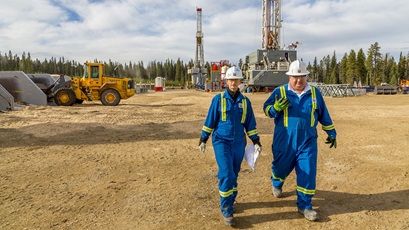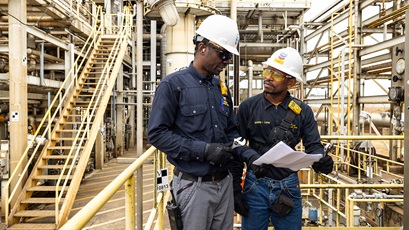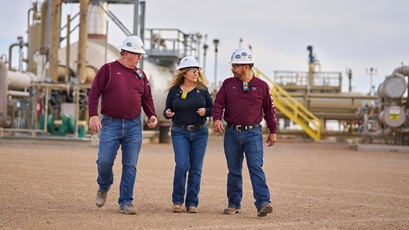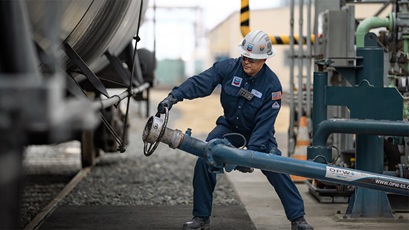our operations
energy everywhere: a new frontier in deepwater development
3 min | august 12, 2024
Kevin Aberdeen, a startup manager with Chevron’s Anchor development, helped prepare the platform to safely begin operating.
From being the first person in his family to graduate college to raising a young family of his own, Kevin Aberdeen can relate to pressure.
As a startup manager on Chevron’s offshore platform Anchor, Aberdeen is now experiencing it in a different sense.
With production now underway, Anchor utilizes industry-leading technology and equipment that can handle pressures as high as 20,000 pounds per square inch (psi) and reach reservoir depths and as low as 34,000 feet beneath the water's surface.
“Helping Chevron set new precedents with Anchor is a big responsibility,” Aberdeen said. “There’s the prestige and fanfare around the 20,000 psi, but there’s also the knowledge that you have to do it right.”

Anchor is positioned approximately 140 miles off the Louisiana coast.
innovation under pressure
Anchor's 20,000 psi equipment for drilling, completions, intervention and subsea production systems is the first of its kind.
Chevron contracted Transocean’s newly built Deepwater Titan drillship to drill and complete the project’s subsea high-pressure production wells. The company employed novel subsea equipment—such as an integrated manifold and pump station—to support production in challenging conditions.
The high-pressure technology is opening up a new frontier in deepwater development. With it, Chevron is continuing to push the boundaries of what is possible in this area.
kevin aberdeen | startup manager
why it matters
Anchor is expected to produce for an estimated 30 years in the U.S. Gulf of Mexico, which has some of Chevron’s lowest carbon intensity producing facilities in the world. Production is expected to peak at 75,000 barrels of oil per day.
That estimated amount of oil produced daily over one year can create enough gasoline to drive an average car from the Earth to the sun—and back—approximately 70 times.

Bringing Anchor to production has involved thousands of workers from the U.S. and around the world.
what’s next
Anchor’s success may enable other high-pressure developments to be unlocked in the U.S. Gulf of Mexico.
Aberdeen’s goal is to ensure that any future projects are done the right way.
“It’s not just about setting a higher bar, but also about setting the correct bar,” he said.
He believes that Chevron has done this with Anchor.
“There’s definitely pride and a sense of accomplishment,” he said. “I feel humbled and grateful to be a part of it.”
topics covered
related content
-

 explainer: where do oil and gas come from?
explainer: where do oil and gas come from?our operationsdecember 30, 2024
-

 gas development opportunities in sub-saharan Africa
gas development opportunities in sub-saharan Africaour operationsdecember 20, 2024
-

 AI boosts profitability in the permian basin
AI boosts profitability in the permian basinour operationsdecember 18, 2024
-

 new california legislation misleading, chevron exec says
new california legislation misleading, chevron exec saysour operationsnovember 26, 2024
chevron email updates
Subscribe to our newsletter to receive news and updates.



